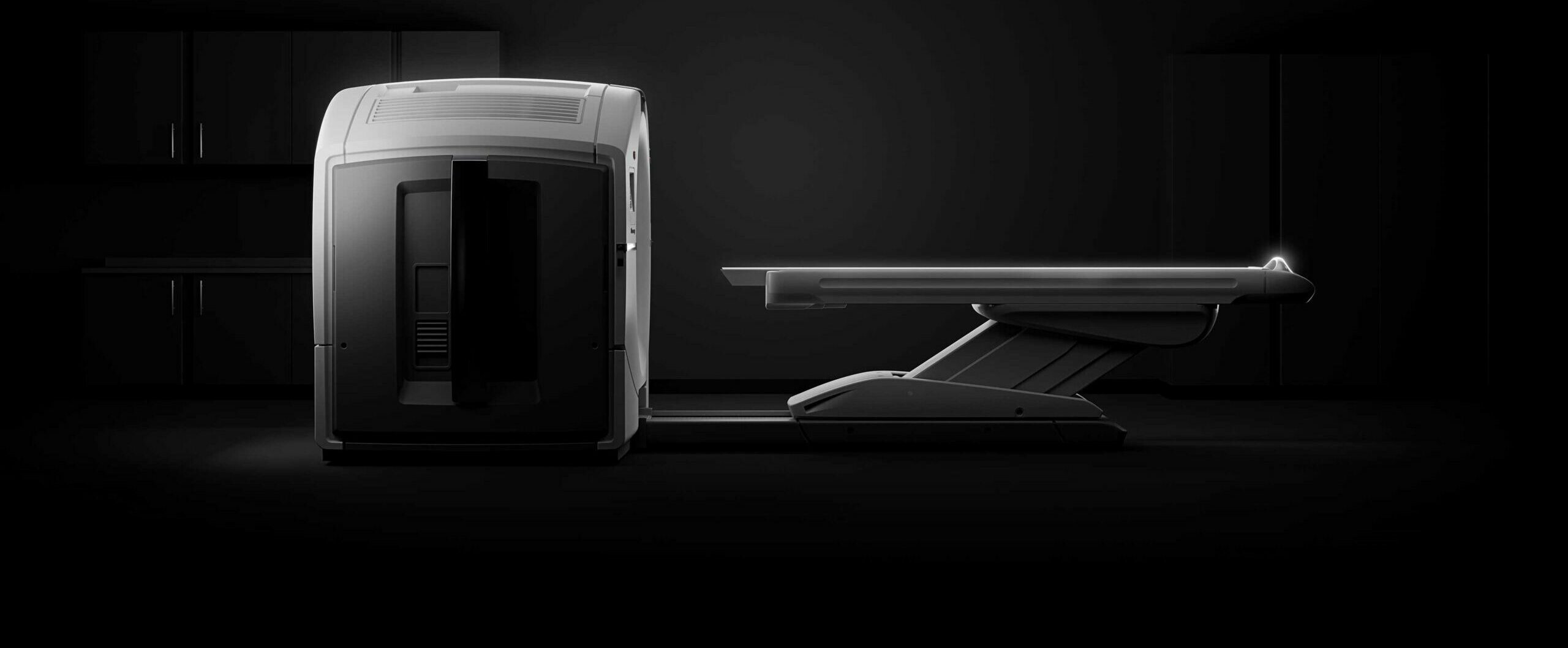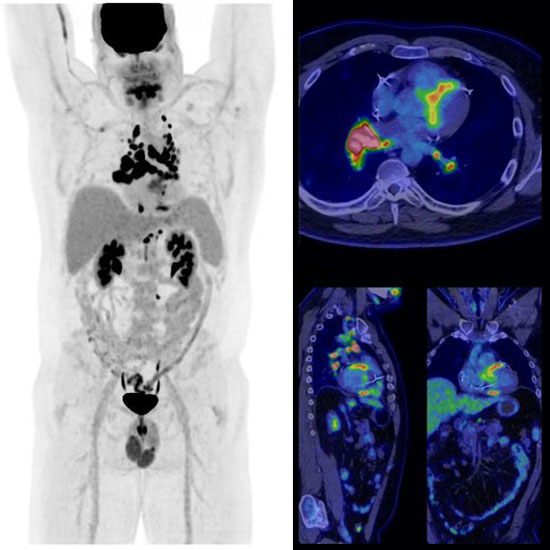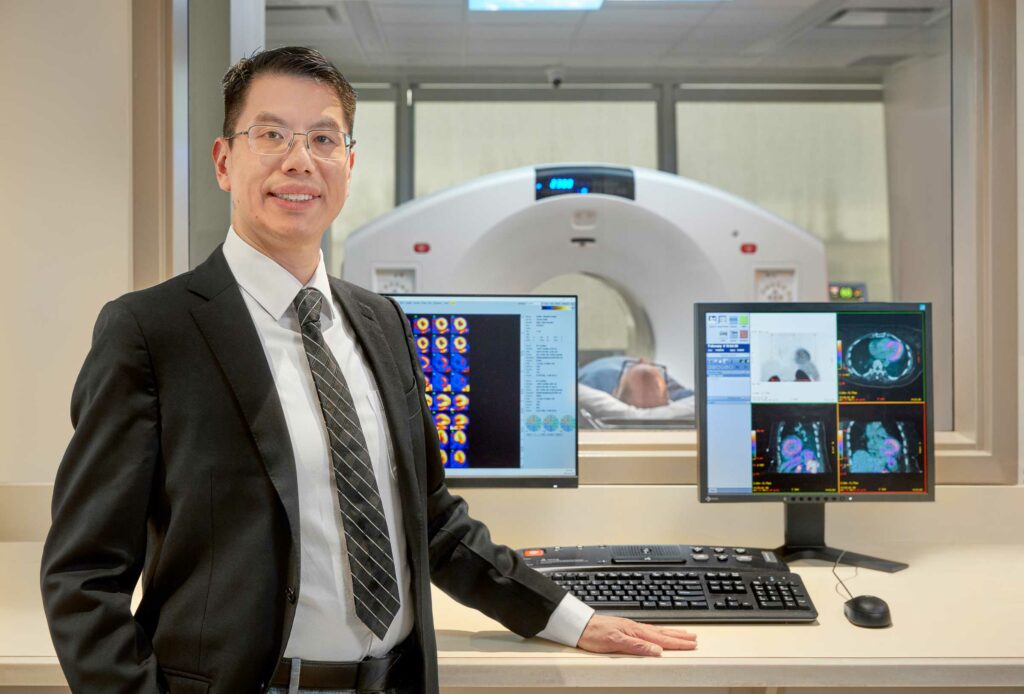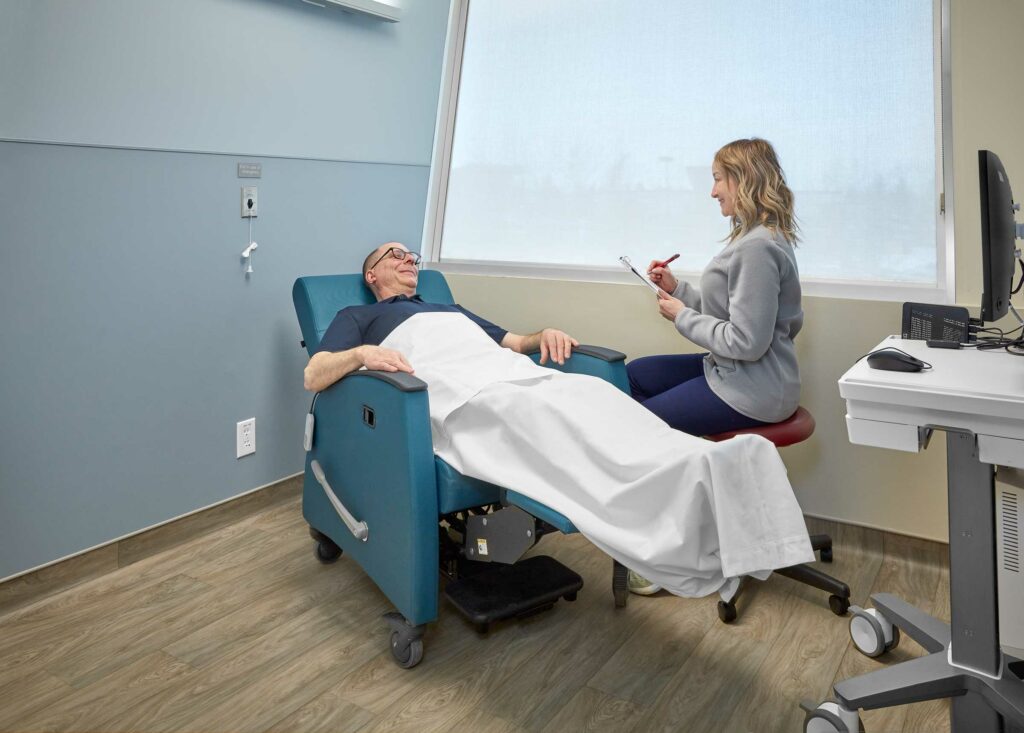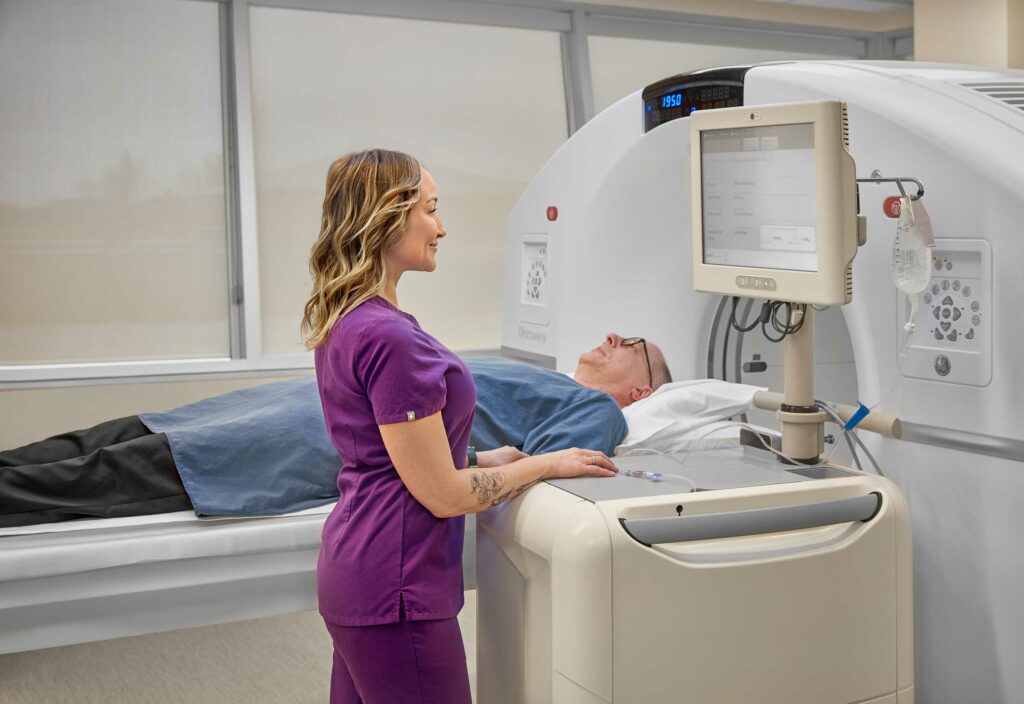How Much Does a PET CT Scan Cost?
MIC uses PET CT imaging for cardiac, oncology, and neurology applications. The Alberta Health Care Insurance Plan (AHCIP) only covers the cost of PET CT imaging in cardiac applications.
The cost of PET CT imaging in oncology or neurology imaging applications is as follows:
| PET CT Imaging Exam | Cost |
|---|---|
| FDG PET CT – Brain Scan | $999.00 |
| FDG PET CT – Standard Whole Body | $1,099.00 |
| FDG PET CT – Extended Whole Body | $1,199.00 |
| FDG PET CT – Head and Neck Package* | $1,499.00 |
| Dotatate PET CT | $3,299.00 |
| PSMA PET CT | $3,299.00 |
| Diagnostic Enhanced CT Scan | $499.00 |
Please note:
- Our dual-trained radiologist and nuclear medicine physicians will protocol all requisitions to ensure an accurate price estimate.
- The price is based on the imaging application, relevant tracer, area of interest (brain, head, neck, whole body, etc.), and need for a combined diagnostic enhanced CT.
- If a combined PET and diagnostic enhanced CT is required, the CT component will be $499.
- There is no cost for PET CT imaging in cardiac applications for patients with a valid Alberta Health Care card or an out-of-province health care card (except Quebec).
- *FDG PET CT – Head and Neck Package includes a standard whole-body scan with separate, dedicated, high-resolution neck imaging.*
Patients are encouraged to talk to their employer or a Benefits Specialist before booking their exam to see if they qualify for extended coverage. Some extended benefits programs or health spending accounts may cover a portion or possibly the entire exam fee.
PET CT FAQs
The camera used in PET imaging can simultaneously detect two gamma-ray photons emitted from the radiotracers, whereas nuclear medicine cameras can only detect single gamma-ray photons.
The benefits of PET imaging include:
1. Lower radiation dose from smaller amounts of short-lived radiotracers.
2. Improved patient experience through a shorter exam time (minutes vs. hours or over several days).
3. Consistently high-quality images (sharper resolution with less background noise).
In general, you should not take over-the-counter medicines like cough syrups, cough drops, or antacid tablets on the day of the exam.
If you have diabetes and fasting or an altered diet is required for your PET CT, we recommend consulting with your diabetes care provider to discuss possible medication adjustments. Typically, we instruct patients to take their insulin/oral agents at least 4 hours before the exam.
If you have any questions or concerns, please call our central booking team at 780-450-1500.
When a PET CT scan is performed, a tiny amount of a radioactive drug, called a radiotracer, is injected into a vein. The amount of radiation from the radiotracer varies depending on the exam. For example, in cardiac perfusion imaging studies, the dose is very low and actually lower than other typical methods of imaging perfusion, such as conventional nuclear medicine.
The risk of negative effects from radiation exposure is very low. However, the tracer might:
• Expose your unborn baby to radiation if you are pregnant.
• Expose your child to radiation if you are breastfeeding.
Before we proceed with any imaging exam, your practitioner and our radiologists will review all available information to ensure the benefits from imaging will far outweigh any potential risks (such as radiation exposure).
The main side effects associated with PET CT imaging are related to intravenous contrast dye, which may be administered for the CT part of the exam. On a rare occasion, some patients may be allergic to the contrast dye.
Patients may also experience temporary side effects from the contrast dye, such as diarrhea, nausea, upset stomach, etc., which usually last less than 24 hours and subside on their own. Side effects from the radiotracer itself are extremely rare.
Generally speaking, all attempts are made to find other non-ionizing imaging methods or to delay the PET CT scan until after pregnancy. However, if the potential benefits from PET CT imaging outweigh the risks of radiation exposure, your physician may recommend the exam.
As always, your physician will help you make the best choice for your health and that of your fetus.
When you schedule your appointment, our team will provide detailed information and discuss if any interruption is required and when breastfeeding can be safely resumed after the PET radiotracers are no longer present in your system.
Essentially all the radiation from a PET CT scan will be gone before the morning after your appointment. We encourage patients to drink plenty of water after their exam to help flush the radiotracer from their system. As a precaution, patients should avoid close contact with pregnant women, babies and young children for 6 hours after the scan.
"FDG uptake" refers to the amount of radiotracer uptake that the radiologist can see on your medical images. When cells need more energy, they often use more glucose and will show more uptake on a scan. FDG uptake is particularly helpful for visualizing metabolic activity in different areas of the body.
Just because a cell is active does not mean it is abnormal. There are many reasons why cells may require more energy. For example, the brain is normally very active and shows proportionately high FDG uptake.
Sometimes there is a misconception among patients that any level of uptake is abnormal – which is not always the case and can lead to unnecessary anxiety and concern.
Physicians and radiologists are most often interested in the pattern of uptake. Some abnormal processes in the body, such as infection or cancer, cause cells to become more active, and their pattern of FDG update changes significantly.
Alberta Health Services. (n.d.). Positron Emission Tomography/Computed Tomography. https://www.albertahealthservices.ca/findhealth/Service.aspx?id=5931
BC Cancer. (n.d.). PET Functional Imaging. http://www.bccancer.bc.ca/our-services/services/pet-functional-imaging
Canadian Cancer Society. (n.d.). Positron Emission Tomography (PET) Scan. https://cancer.ca/en/treatments/tests-and-procedures/positron-emission-tomography-pet-scan
Cedars Sinai. (n.d.). Myocardial Perfusion PET Stress Test. https://www.cedars-sinai.org/programs/imaging-center/med-pros/cardiac-imaging/pet/myocardial-perfusion.html
Cleveland Clinic. (2022). PET Scan. https://my.clevelandclinic.org/health/diagnostics/10123-pet-scan
Columbia Radiology. (n.d.). PET-CT. https://www.columbiaradiology.org/services/pet-ct
Digirad. (2017). How is PET/CT different from traditional PET imaging? https://www.digirad.com/pet-ct-different-traditional-pet-imaging/
Health Images. (n.d.). CT Scan vs. PET Scan. https://www.healthimages.com/ct-scan-vs-pet-scan/
Johns Hopkins Medicine. (n.d.). Positron Emission Tomography (PET). https://www.hopkinsmedicine.org/health/treatment-tests-and-therapies/positron-emission-tomography-pet
Kapoor, V., McCook, M., Torok, F. (2004). An Introduction to PET-CT Imaging. https://pubs.rsna.org/doi/10.1148/rg.242025724
Mayo Clinic Medical Editors. (2023). Positron Emission Tomography Scan. https://www.mayoclinic.org/tests-procedures/pet-scan/about/pac-20385078
Memorial Sloan Kettering Cancer Center (2023). About your PET-CT with FDG Tracer. https://www.mskcc.org/cancer-care/patient-education/pet-ct-fdg
My Health Alberta. (2022). Positron Emission Tomography (PET). https://myhealth.alberta.ca/Health/Pages/conditions.aspx?hwid=aa80345
PET/CT Imaging of Berkeley. (n.d.). The Advantages of PET/CT over PET. https://petctberkeley.com/patient/petctbenefits/
Radiology Info. (n.d). PET/CT. https://www.radiologyinfo.org/en/info/pet
UCSF Department of Radiology and Biomedical Imaging. (n.d.). PET/CT Scan: How to Prepare, What to Expect & Safety Tips. https://radiology.ucsf.edu/patient-care/prepare/pet-ct
